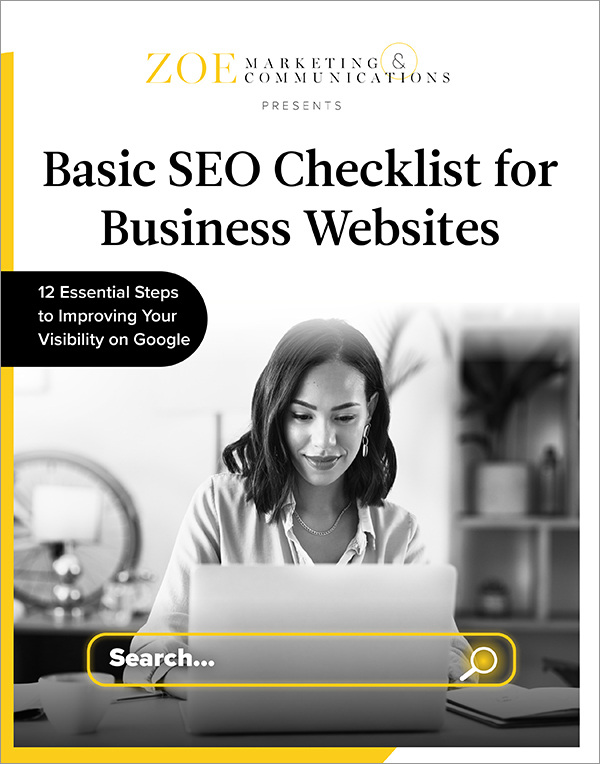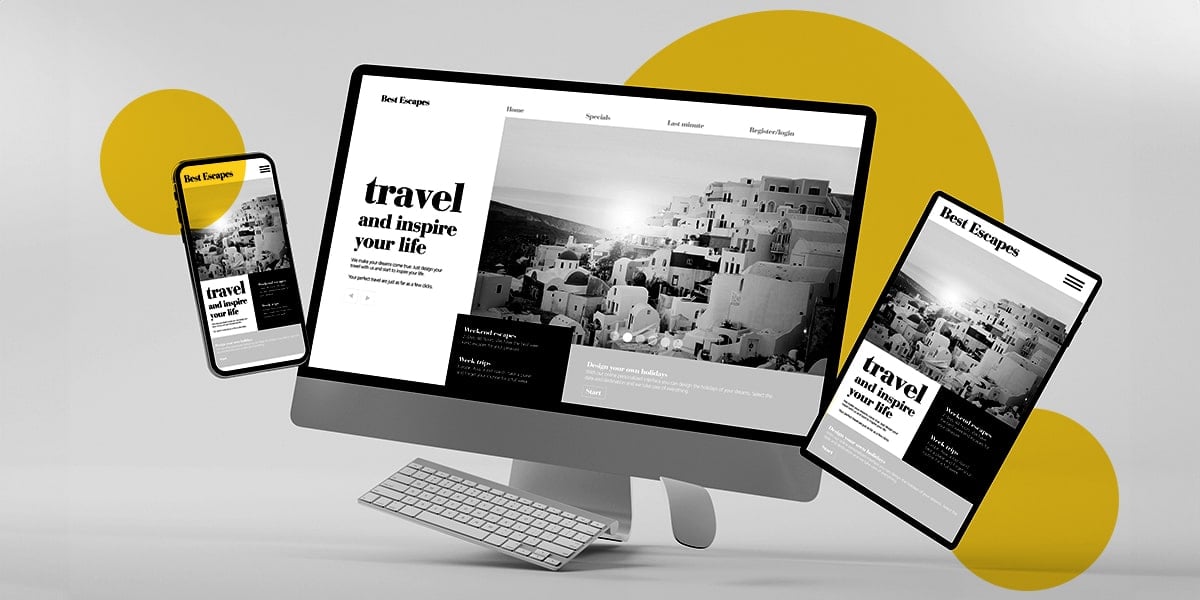
Download Your Basic SEO Checklist
Unlock the fundamentals of search engine optimization. This checklist provides step-by-step guidance to improve your site’s search ranking.

People judge your website in the blink of an eye — 7 times faster than that, actually. Research has found it takes just 0.05 seconds to form an opinion.
That means your website’s first impression matters. Whether your site is already strong or needs a refresh, there are clear steps you can take to improve it.
At Zoe Marketing & Communications, we’ve helped businesses optimize their websites since 2020. Based on that experience, here are 12 must-have features of a great site.
Unlock the fundamentals of search engine optimization. This checklist provides step-by-step guidance to improve your site’s search ranking.
Your website should be easy to manage for small updates, even if you work with a developer.
Pick a CMS (content management system) that fits your needs.
WordPress powers 43% of websites, but Wix and Squarespace offer user-friendly, no-code options. Whatever you choose, make sure:
At least 60% of web traffic comes from mobile devices, so your site must be optimized for small screens first. A mobile-first design includes:
Users expect your site to load in 3 seconds or less. Google even ranks faster sites higher in search results. Improve speed by:
One of your most visited pages, your “about us” page builds trust and explains your business. Best practices:
Your website should be consistent with your brand. This includes:
Make it easy for visitors to contact you on multiple pages, not just your contact page. Essential elements:
People skim websites rather than read every word.
Make content easy to digest with:
If your landing page asks visitors to fill out a form, ensure it’s clear and conversion-friendly. Strong landing pages should:
CTAs guide visitors toward action, like signing up for a newsletter or booking a call. They should:
Search engine optimization helps people find your site when they Google services like yours.
Key SEO best practices:
A secure website protects user data and builds trust.
Two must-haves:
If your site collects emails or payments, prioritize security.
Blogs, videos and resource centers builds credibility and position you as an expert. Best practices:
A great website combines speed, usability, branding and security. This blog covered the top 12 features every website should have.
Need expert guidance? Talk to us at Zoe Marketing & Communications. We specialize in website optimization, content strategy and SEO to make your site work harder for you.
Meanwhile, focus on:

Unlock the fundamentals of search engine optimization. This checklist provides step-by-step guidance to improve your site’s search ranking.
As Zoe Marketing & Communications’ content manager, Kim Kovelle brings over 20 years of writing and editing experience in metro Detroit. She has strong roots in community journalism and a knack for making complicated topics make more sense.
